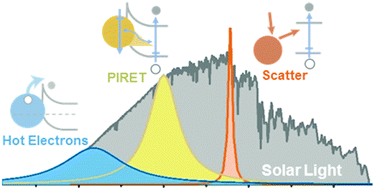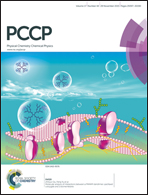Theoretical maximum efficiency of solar energy conversion in plasmonic metal–semiconductor heterojunctions†
Abstract
Plasmonics can enhance solar energy conversion in semiconductors by light trapping, hot electron transfer, and plasmon-induced resonance energy transfer (PIRET). The multifaceted response of the plasmon and multiple interaction pathways with the semiconductor makes optimization challenging, hindering design of efficient plasmonic architectures. Therefore, in this paper we use a density matrix model to capture the interplay between scattering, hot electrons, and dipole–dipole coupling through the plasmon's dephasing, including both the coherent and incoherent dynamics necessary for interactions on the plasmon's timescale. The model is extended to Shockley–Queisser limit calculations for both photovoltaics and solar-to-chemical conversion, revealing the optimal application of each enhancement mechanism based on plasmon energy, semiconductor energy, and plasmon dephasing. The results guide application of plasmonic solar-energy harvesting, showing which enhancement mechanism is most appropriate for a given semiconductor's weakness, and what nanostructures can achieve the maximum enhancement.


 Please wait while we load your content...
Please wait while we load your content...